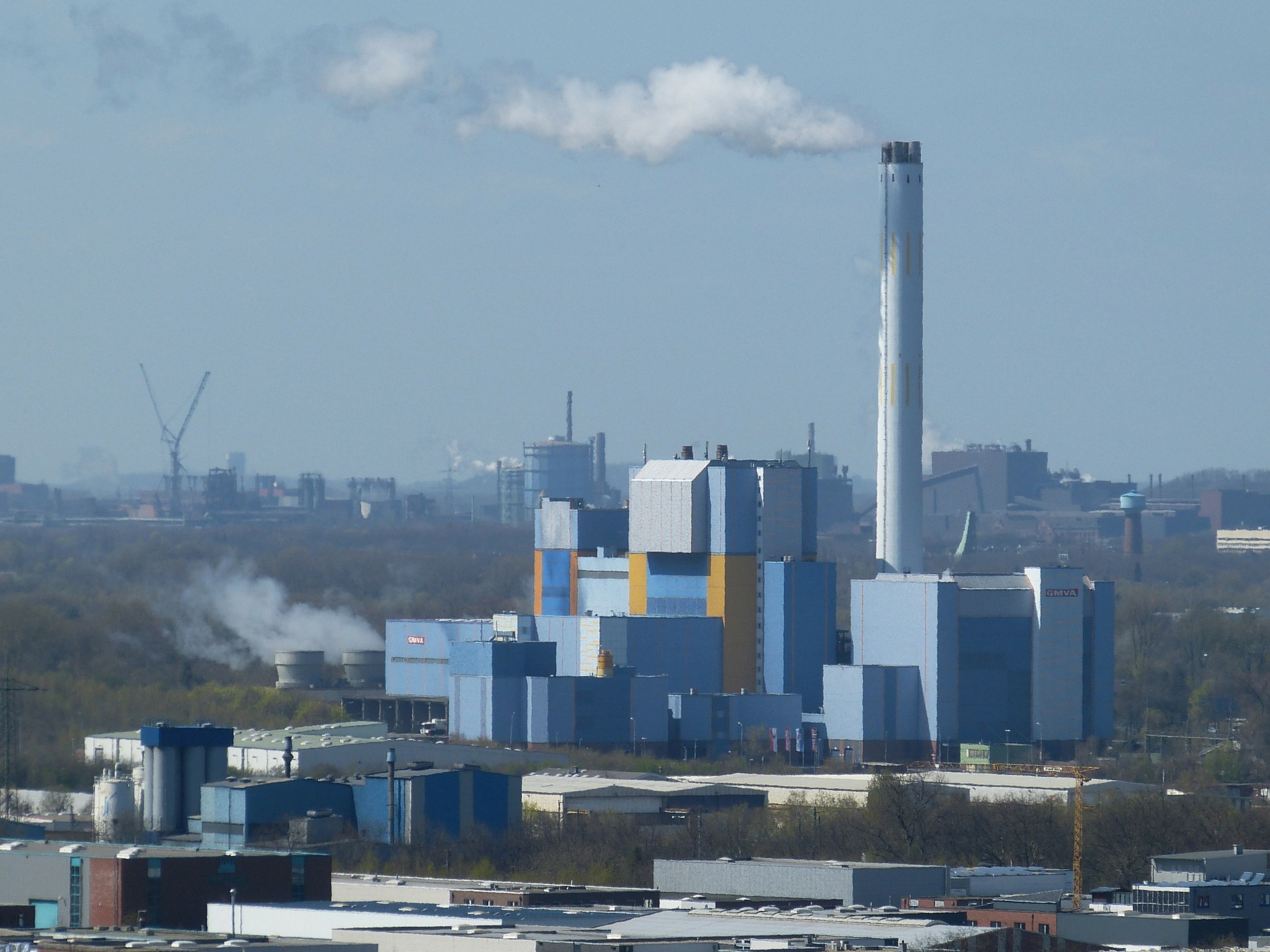What happens to nanoparticles when they become waste?
For the past twenty years, industry sectors across the board have been producing a wide range of nanomaterials. They have developed rapidly and with little in the way of regulation. This has led to a regulatory vacuum when it comes to the end-of-life management of these nanomaterials. Little is known about the environmental and health impacts linked to the future of this nanowaste. IMT Atlantique researchers have therefore led two successive projects on the incineration of nanowaste as part of a research consortium: NanoFlueGas and Nano-Wet. The results confirm the persistence of certain nanoparticles after they leave the incinerator, in the form of effluent and ashes. Last April, the research consortium, made up of IMT Atlantique, INERIS and industrial partner Trédi – Groupe Séché Environnement, submitted its technical recommendations to ADEME. Researcher Aurélie Joubert, lead author of the Nano-Wet report and researcher at IMT Atlantique, provides a look back at how this pioneer program came about.
What was the purpose of the NanoFlueGas and Nano-Wet project?
Aurélie Joubert: There are currently no regulations on the management of nanoparticle waste, especially for end-of-life materials. If the nanoparticles contained in the waste are identified as being hazardous for the environment or health, this waste is categorized and treated in the hazardous waste cycle. If not, they follow the common domestic waste incineration cycle. Our goal was to understand what was happening to the nanoparticles over the course of this treatment, to determine whether the cycles are adapted to nanowaste and possibly how to optimize them.
During the NanoFlueGas project, we studied the incineration of nanowaste at temperatures of 850°C, which is the common practice in the domestic waste management cycle. A lab incineration furnace was developed for this purpose at INERIS. It reproduced the same conditions in terms of temperature, air turbulence and oxygen levels. We were able to confirm that nanoparticles were released during treatment at varying concentrations depending on the nature of the nanowaste being studied. We also observed a capture efficiency of over 99% of the nanoparticles released thanks to a system developed at IMT Atlantique: a pilot blowback bag filter.
During the second project, Nano-Wet, which ended on April 1st, we focused on the hazardous waste incineration cycle at 1,100°C and on a technique for the wet processing of smoke. ADEME, which funded the project, now has the results of this study, and they are now public.
Which types of nanowaste have you worked on, and where do they come from?
AJ: A national registry—called R-nano—has existed since 2013. It requires all nanoparticles present on French territory to be declared. We worked on actual waste deposits received by Trédi that are part of this registry. For the Nano-Wet project, we worked on chlorinated waste, which is waste produced during the manufacturing of PVC floor covering in the construction sector. We also had sulfur waste from ion exchange resin beads used for water treatment. Finally, we worked with organosilicon waste, in the form of a polymer from mastic, which we had already studied in the previous project and found to have high-emissivity.
We went through a fairly long and in-depth characterization phase for the types of waste selected. This was a choice we made and was unlike other research projects in which laboratories produce their own product and are therefore perfectly aware of its composition. We wanted to use real waste deposits, for which we did not know the exact composition, in order to develop relevant methodological tools for analysis. This could now allow industrialists like Trédi to identify the potential nanofillers in its waste in the lab, enabling them to remain in advance of the regulations in this area.
What were the findings from the Nano-Wet project?
AJ: For the incineration component, we observed different scenarios in the nanoparticles present in the smoke. This revealed that nanowaste behaves differently during incineration depending on the composition. With organosilicon polymer waste, the initial nanostructure of the silica is preserved. It even increases through the formation of nano-silica caused by the degradation of a polymer. Conversely, the nanostructure disappears in PVC waste. In the case of resin waste, which does not originally contain nanofiller, a nanostructure appears due to reactions involving the impurities that were present from the beginning.
The results also suggest that the “hazardous waste” cycle with incineration at 1,100°C should be applied to nanowaste. With the organosilicon polymer waste, we found that incineration at 1,100°C instead of 850°C reduced nanoparticle emissions due to a sintering phenomenon. This interesting finding could be applied to other types of waste. Concerning the smoke treatment system, we specifically focused on a device for treating gaseous pollutants: a washing column. We showed that the washing column reduced the quantity of nanoparticle emissions by 60% after incineration. This column therefore significantly contributes to the overall effectiveness of the treatment system.
Why did you decide to focus on the water column smoke treatment process?
AJ: Both researchers and industrialists see scrubbers as an unusual process for nanoparticles, because they are normally used to treat acid gases in the smoke. With Nano-Wet, we demonstrated that they are still significantly effective with nanoparticles, reducing the quantity by 60%. This was a rather unexpected outcome, especially since it was obtained without optimizing the process: we studied the column’s effectiveness without adapting it to treat nanoparticles. Despite its effectiveness, it is important to maintain the complementary procedures designed specifically for particle collection, namely bag filters and electrostatic precipitators, which have an effectiveness of 99%. We are pioneers in this type of study and we will continue. We want to assess the influence of the operating conditions to improve the scrubbers’ effectiveness for nanoparticles, while maintaining their effectiveness with acid cases.
How did you go about studying the effectiveness of the water columns?
AJ: The idea was to build a water column that sprays fine droplets in our research facility. We developed our pilot test to enable us to work in realistic conditions in terms of temperature and humidity, but on a reduced scale. We kept the same turbulent flow regime, the same ratio between the flow of the liquid sprayed into the column and the air flow, the same size for the sprayed droplets, etc. Here we clearly witnessed the advantage of working with an industrialist on this project: Trédi provided us with the operating conditions in the form of technical specifications at the start of the project. However, we did simplify the experiment: the conditions are very complicated in the flue gas treatment lines because due to the large amount of acid gases. We made the decision to inject air enriched with nanoparticles without injecting corrosive acid gases like hydrochloric acid and sulfur dioxide.
Was it easy to transition from the laboratory to the industrial site?
AJ: When possible, we try to incorporate an on-site measurement phase in order to compare the laboratory scale with the real scale. In the context of the Nano-Wet project, a specialized team from INERIS conducted two measurement campaigns at the industrial site. They were faced with very complicated sampling conditions. Results from samples taken at the entrance to the water column allowed us to determine the particle size and concentration, conditions that we could then reproduce in the lab.
When the particles are removed from the column, they end up in the wastewater. What happens to them after that?
AJ: This is an issue that must be addressed. We did not identify the particles in the liquid phase after leaving the column. We do not know what form they take, if they remain nanoparticles or if they agglomerate, in which case they could easily be separated in the water treatment station. Other research laboratories are working on these issues.
You just submitted your last report to ADEME. How could the legislation change?
AJ: The threshold values for particle emissions for waste incinerators are currently expressed in terms of total mass concentration in micrograms per cubic meter of air. This is not relevant for nanoparticles. Despite their negligible mass, they are suspected to be highly toxic. In the future, I think the standards could specify a concentration threshold in terms of quantity of particles, or in terms of mass according to the given particle size. For indoor air quality, for example, new tools have been developed to characterize mass concentrations by size of fine particulate matter: PM 10, PM 2.5 or PM 0.1.
This article was written (in Frenh) by Alice Mounissamy for I’MTech.





Leave a Reply
Want to join the discussion?Feel free to contribute!